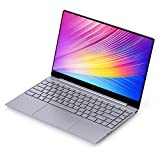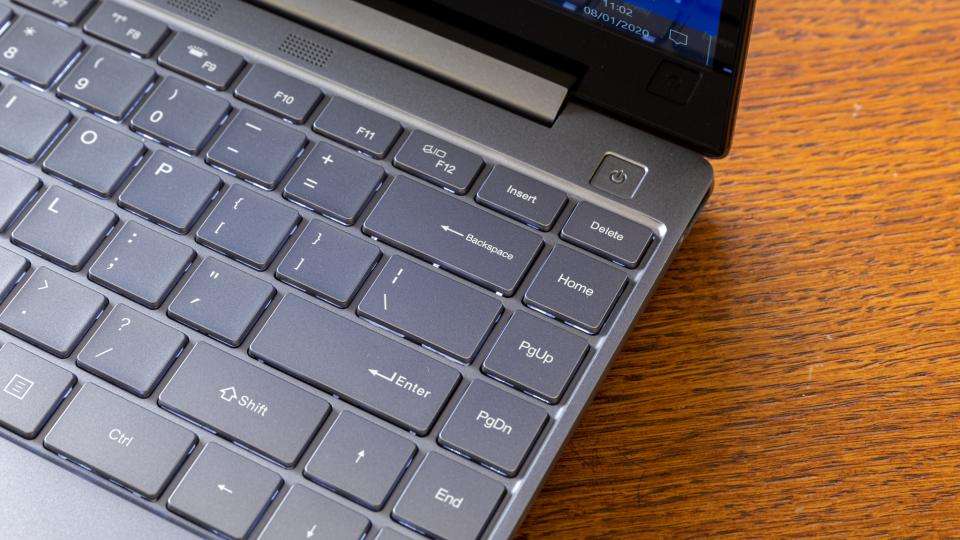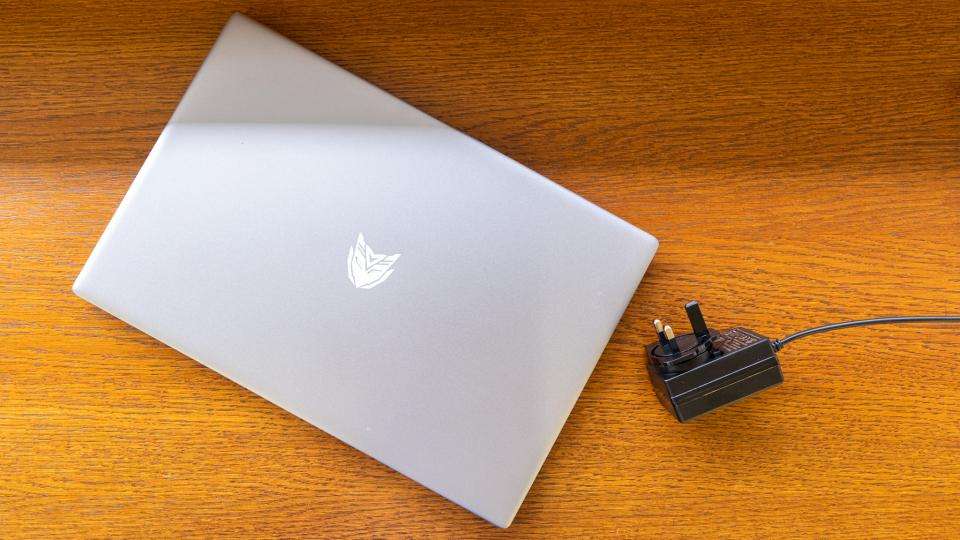Bmax , like Xidu , is one of the newer laptop manufacturers from China whose sudden arrival from seemingly nowhere makes the likes of Chuwi, Teclast and Alldocube seem as established and venerable as HP or Dell.
By the end of January Bmax will have launched four machines in its "MaxBook" range in as many months: The Y11 and Y13 2-in-1 ‘yoga’ machines are already on sale while a 15.6-inch laptop called the S15 is due shortly.
READ NEXT: These are the best cheap laptops money can buy
Bmax X14 review: What you need to know
The most recent Bmax device to hit the streets is the X14, a laptop that went on sale just as the lights went out on 2019.
This is a Gemini Lake Intel Celeron N4100-powered laptop with 8GB of RAM, a 14.1in display and 256GB of storage. So it isn’t super powerful but should do the job for casual use.

Bmax X14 review: Price & Competition
The X14 will set you back £399 from the Bmax store on Amazon which is solid rather than exceptional value for what is a pretty conventional 14.1in laptop. However, if you are prepared to take a walk on the wild side and order one from a Chinese reseller you can save yourself over one hundred notes.
At the time of writing AliExpress is selling the X14 for £262 , Banggood for £255 , Geekbuying for £288 . Those prices represent significant savings over the Bmax Amazon store.
Assuming you want to part with that sort of money for a 14-inch Windows 10 laptop with a Full HD screen, a slim, all-metal body and up-to-date processor the list of alternatives isn't all that long.

The EZBook X3 Pro from fellow Chinese manufacturer Jumper is physically very – and I do mean very – similar to the X14 and can be found for under £250 but it has a 13.3in rather than a 14.1in display and less storage at 180GB.
Chuwi's 14in LapBook Pro has recently been upgraded to an 8GB RAM/256GB SSD spec and has a fully laminated screen all for £275 from Amazon . Its battery is smaller than the Bmax, however, at only 33.7WHr, while the Type-C port doesn't support video-out so you'll need a micro HDMI cable.
Turning to more familiar high street names, the HP Stream 14 has a similar-sized Full HD display and, at £180, is much cheaper . But it's also much less capable with a dual-core AMD chip, 4GB of RAM, 64GB of storage but no expansion bay and a rather low-rent SVA display all wrapped up in a plastic body.
Lenovo meanwhile is offering the 4GB/128GB IdeaPad S340 14in machine for £260 at the moment , saving £70 on the RRP. It's a decent machine, powered by a quad-core AMD Ryzen processor. Like the HP, its body is plastic, albeit a much more upmarket plastic. However, the cheaper IdeaPads use TN rather than IPS panels so the screens can look dull and washed out and the keyboards lack a backlight.
Both the HP and Lenovo machines also are rather chunky compared with the Chinese alternatives.
Bmax X14 review: Design & Build Quality
As it’s made of entirely of a metal alloy right down to the palm rest and keyboard surround, the Bmax is impressively solid and well made for a budget laptop. The styling is generic but it looks handsome enough in its silver livery.
The logo on the lid looks like Optimus Prime's head and is a little too cartoonish for my taste but the eyes glow when the X14 is fired up, which is a feature that’s hard not to crack a smile at. In more practical terms the lid has almost zero flex to it and the 75% width hinge is very sturdy.
Despite the pillbox build quality, at 1.32Kg the X14 is pretty light and at 322 x 215 x 13mm (back) / 8mm (front) usefully compact for a 14in machine.
The keyboard is excellent: the base is solid and the keys have a clean and precise action with a 1.5mm key travel that’s nigh-on ideal and there's a handy two-stage backlight, too. At 125 x 75mm, the one-piece Precision trackpad is one of the bigger I've encountered recently on budget laptops and the click action is very nicely engineered.

The international rather than UK layout and the absence of a Print Screen button and fingerprint reader are the only bugbears worth mentioning.
The X14 includes a tolerably quick 256GB SATA3 SSD (made by Foresee, if you’re interested). If that's not enough storage there's an easy-access hatch in the bottom for adding a second M.2 2280 SATA3 drive.
Connectivity is limited to a single Type-A USB 3 port, a full spec Type-C connector and a 3.5mm audio jack. That makes a decent Type-C dock something of a must-have. There's also a fully-recessed MicroSD card slot.
Strangely, Bmax has placed the 2MP webcam and dual-array microphones beneath, rather than above, the display. This makes images look odd thanks to the low camera angle – a video caller commented that they felt they were looking up my nose – and means the microphones pick up keyboard noise. I'm not sure what they were thinking when they decided on this layout.
Beneath that oddly placed webcam you will see four speaker grilles. Don't be fooled by them. As with almost all Chinese laptops, the X14's Achilles heel is sound quality. I suspect the four grilles conceal only two speakers (covering them seems to have no impact on sound quality one way or another) as there’s precious little bass or sonic composure on offer. Maximum volume is just about sufficient.
The rather poor quality of the loudspeakers used by Bmax, Chuwi, Xidu, Alldocube, Teclast et al is beginning to get my goat. Surely there must be a maker of decent quality, affordable laptop speakers somewhere in southern China?
Bmax X14 review: Display
The X14's 1,920 x 1,080 display can't be described as a weak spot but with only 205cd/m2 to offer it's not all that bright and neither is it fully laminated. There's a small air gap between the IPS panel and the glass screen, which makes it very reflective.
In the average home or office environment, these aren't major drawbacks but outdoors or under bright neons they can be. Oh, and for the record, the X14 is not a touchscreen laptop even though I've seen reviews on less reputable websites say that it is.
On the positive side, it reproduces the sRGB colour space at 82% coverage, which is solid, and the contrast ratio of 847:1 isn't too shabby, either. Its an IPS screen, too, so viewing angles are usefully wide. In short, the display is good but not great.
Bmax X14 review: Performance
While Celeron N4100 -powered (formerly Gemini Lake) laptops are much of a muchness when it comes to performance the X14 noses ahead thanks to that 8GB of LPDDR4 RAM being dual- rather than single-channel. The difference is not huge but everything feels just a little bit smoother while pauses are fewer and shorter when, for instance, you scroll through really long PDF files or spreadsheets.
Needless to say, the X14’s gaming credentials are severely limited by the chipset. Casual games from the Windows 10 store run well enough but anything with demanding 3D graphics will not.
The impact of the dual-channel RAM is reflected in the benchmark scores. Across the board, the Bmax X14 does just a wee bit better than any 8GB single-channel Gemini Lake laptop I’ve looked at.
Bmax X14 review: Battery Life
The X14 is another Chinese laptop with a 5,000mAh (38WHr) battery. Rechargeable via either the DC-in jack or the Type-C port, this will last from between four and seven hours depending on how hard you push it. This is where the lack of screen brightness is a bit of a bonus. The Expert Reviews standard battery test returned a time of 5hrs 15mins, which isn't too bad.
Some final notes on the X14. It runs a fully legit version of Windows 10 Home, which upgraded to build 19.09 without drama. It's also passively cooled and, therefore, completely silent. Even when pushed hard it seldom got more than moderately warm.
As usual, I wrapped up my time with the X14 by checking to see if the BIOS is unlocked – it is – and by testing it with both Ubuntu and Clear Linux, which both worked faultlessly, making it the perfect candidate for those wanting to install an open-source OS.
Bmax X14 review: Verdict
At £400 I think the X14 is just a little overpriced but, at the sub-£300 price you can get it from various Chinese retailers, it is very good value.
The display is a little humdrum but the excellent keyboard, 256GB SSD, dual-channel memory and superb build quality make up for that. As an affordable 14-inch ultrabook the X14 has a lot to recommend it.
|
Bmax X14 specifications |
|
Processor |
Intel Gemini Lake N4100 |
|
RAM |
8GB |
|
Additional memory slots |
No |
|
Max. memory |
8GB |
|
Graphics adapter |
Intel UHD Graphics 600 |
|
Graphics memory |
Shared |
|
Storage |
256GB |
|
Screen size (in) |
14.1 |
|
Screen resolution |
1,920 x 1,080 |
|
Pixel density (PPI) |
156 |
|
Screen type |
IPS |
|
Touchscreen |
No |
|
Pointing devices |
Touchpad |
|
Optical drive |
No |
|
Memory card slot |
microSD |
|
3.5mm audio jack |
Yes |
|
Graphics outputs |
USB Type-C |
|
Other ports |
USB Type-A (USB 3.0) |
|
Web Cam |
1080p |
|
Speakers |
Stereo |
|
Wi-Fi |
802.11ac |
|
Bluetooth |
Bluetooth |
|
NFC |
No |
|
W (mm) |
323 |
|
D (mm) |
217 |
|
H (mm) |
15 |
|
Dimensions, mm (WDH) |
323 x 217 x 15mm |
|
Weight (kg) - with keyboard where applicable |
1.32 |
|
Battery size (Wh) |
38 |
|
Operating system |
Windows 10 Home |
